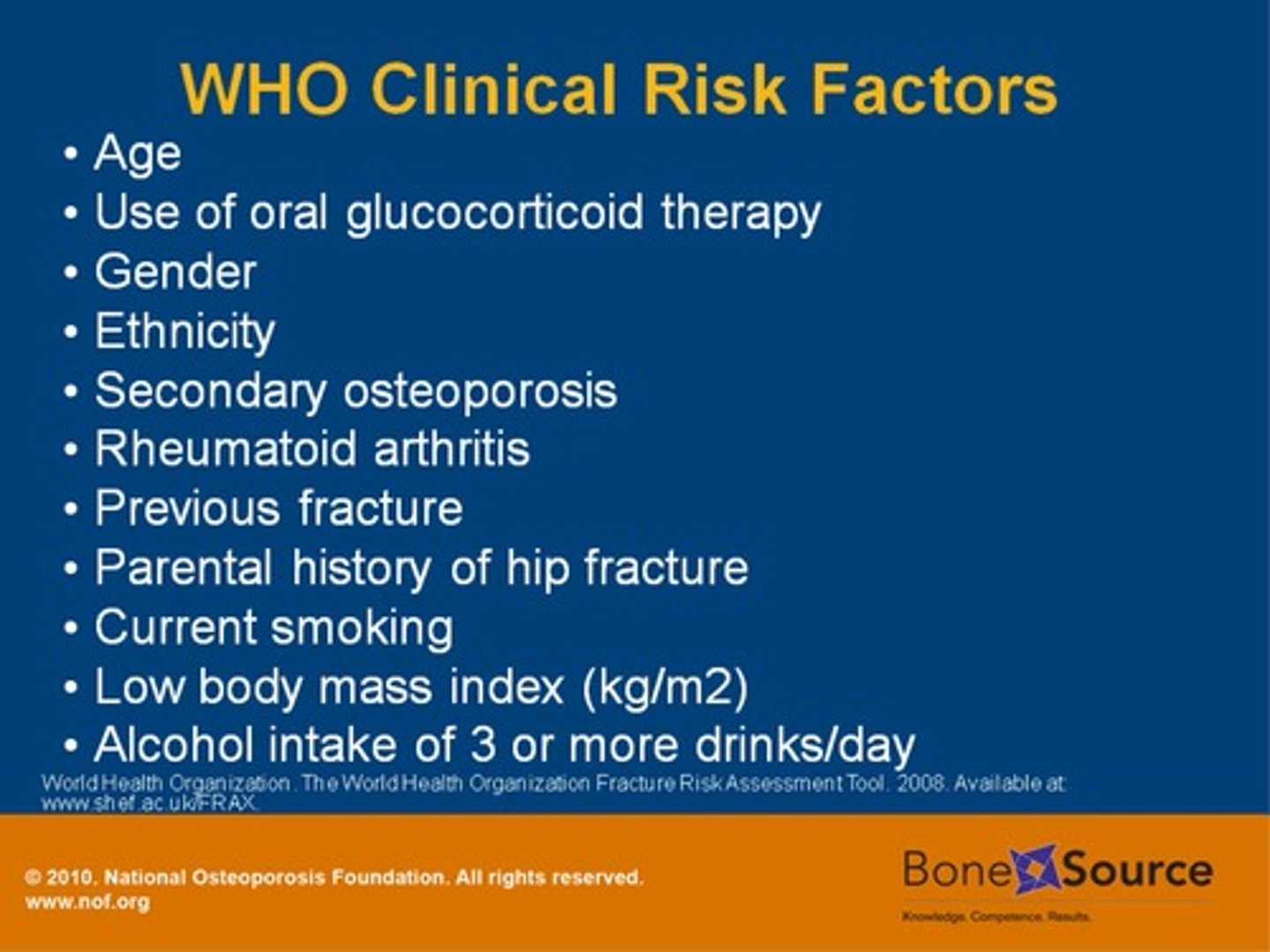Hygiene Principles (osteoporosis)
1/10
There's no tags or description
Looks like no tags are added yet.
Name | Mastery | Learn | Test | Matching | Spaced |
|---|
No study sessions yet.
11 Terms
Osteoporosis
The loss of bone mass, more bone is bein resorbed than formed.
Periodontal disease, menopause, and osteoporosis
Bone loss is associated with with these 3 things:
Age
This is the strongest correlation to bone loss, menopause is the second strongest correlation.
White and Asian women, women with early menopause, individuals with fair skin, and individuals with small frames
The highest prevalence of osteoporosis is found among these 4 populations:
FRAX
The WHO developed the algorithm on absolute fracture risk called ————. Also referred to as a 10-year fracture-risk model and 10-year fracture probability, estimates the likelihood of a person to break a bone because of low bone mass or osteoporosis over a period of 10 years.
30%
Some tests that can diagnose osteoporosis in its early stages include dual-energy x-ray absorpiometry (DEXA or DXA), quantitative computed tomography (QCT), and radiographic absorptiometry (RA). The common x ray film cannot be used to diagnose osteoporosis early because bone loss must reach at least a ——% level before it's detected radiographically.

Evista (raloxifene)—monaminobisphosphonate
This drug for osteoporosis inhibits bone break down. Approved by the FDA for prevention and treatment of postmenopausal osteoporosis.
Calcitonin
This is a drug for osteoporosis that slows bone breakdown and reduced pain of fractures. FDA approved in injectable and nasal forms.
Sodium fluoride
This drug for osteoporosis has been used to stimulate bone formation in the vertebrae, treat osteoprotic spine fractures, and prevent spine fractures.
Osteoporosis
This is not a causative factor in periodontitis but it may affect the severity of the disease in pre-existing periodontitis and probability important in the creation of a susceptible host.